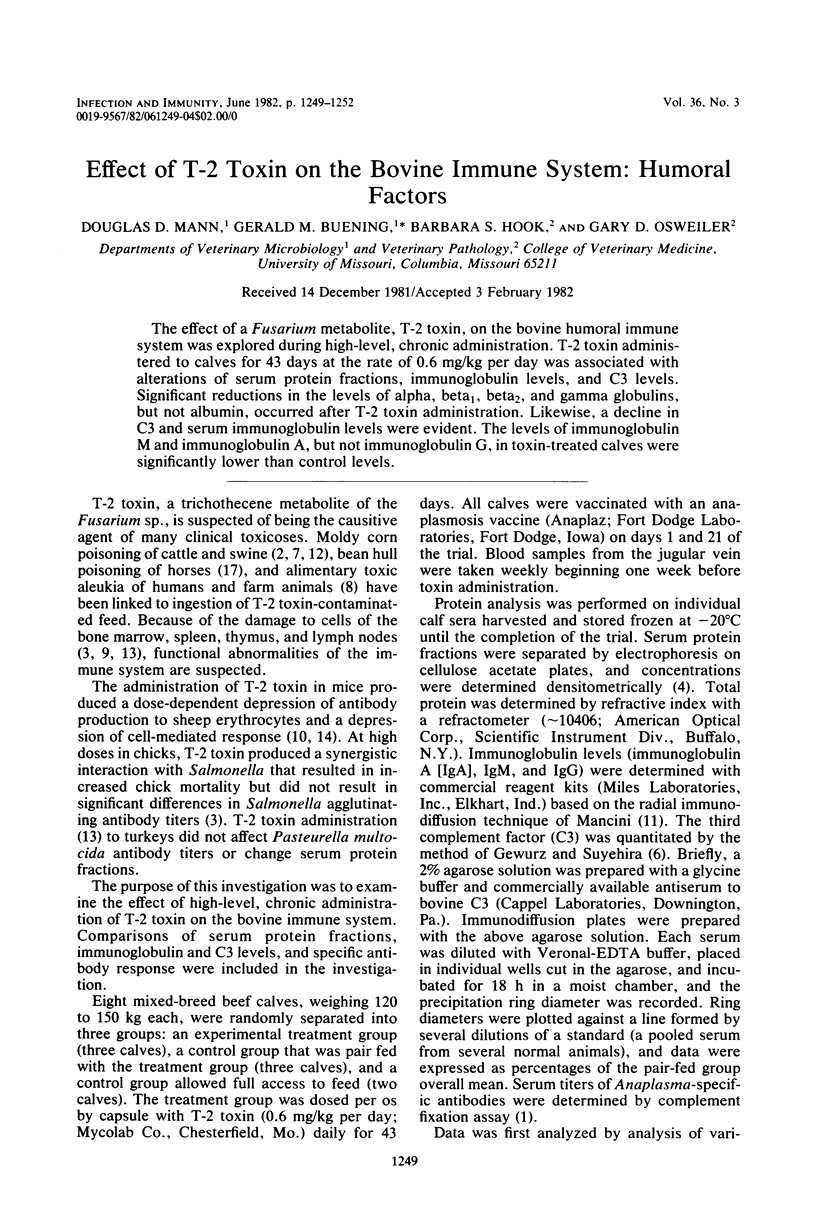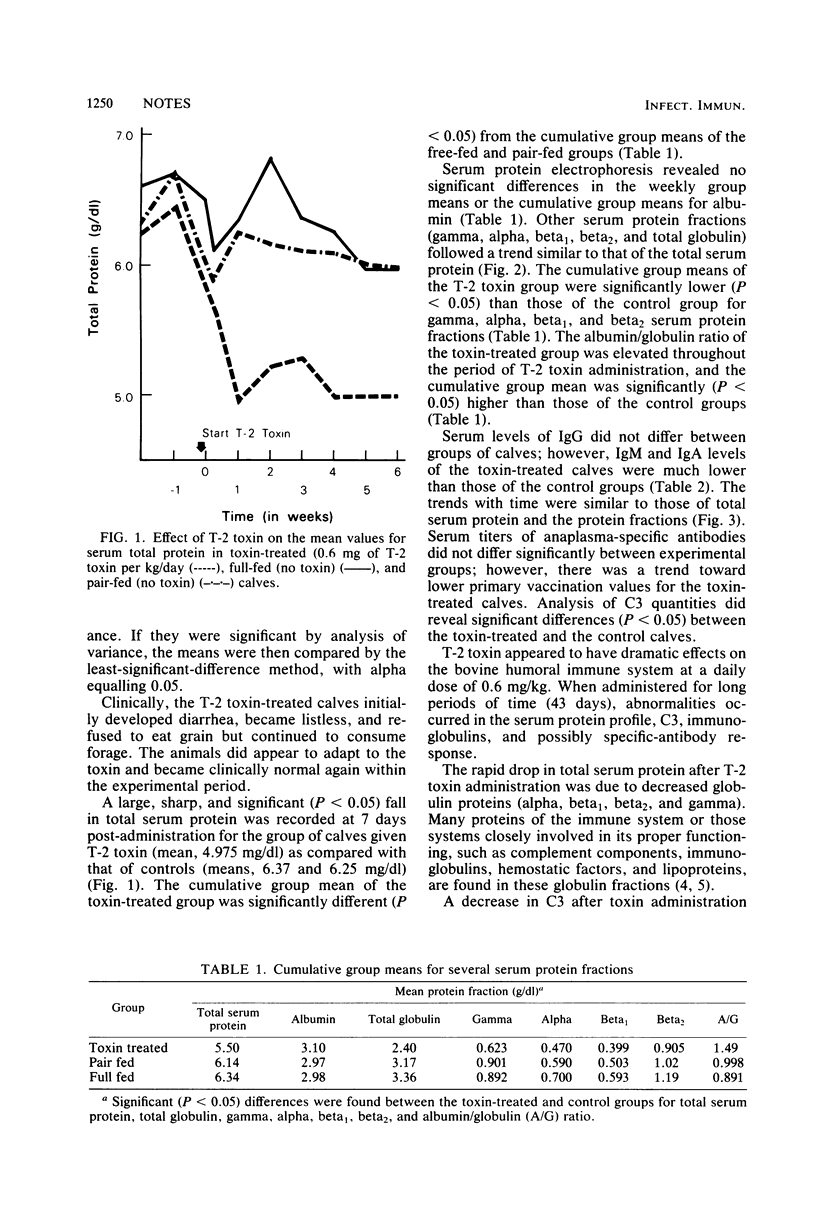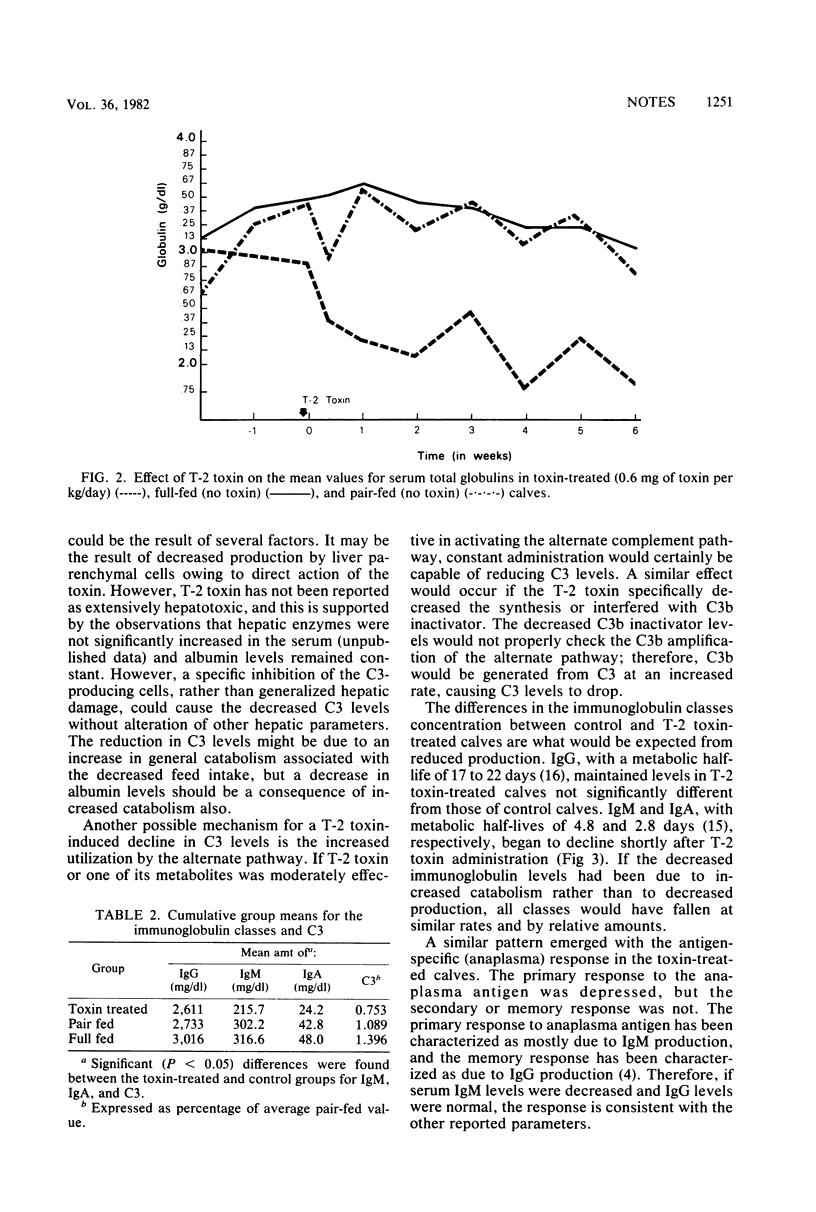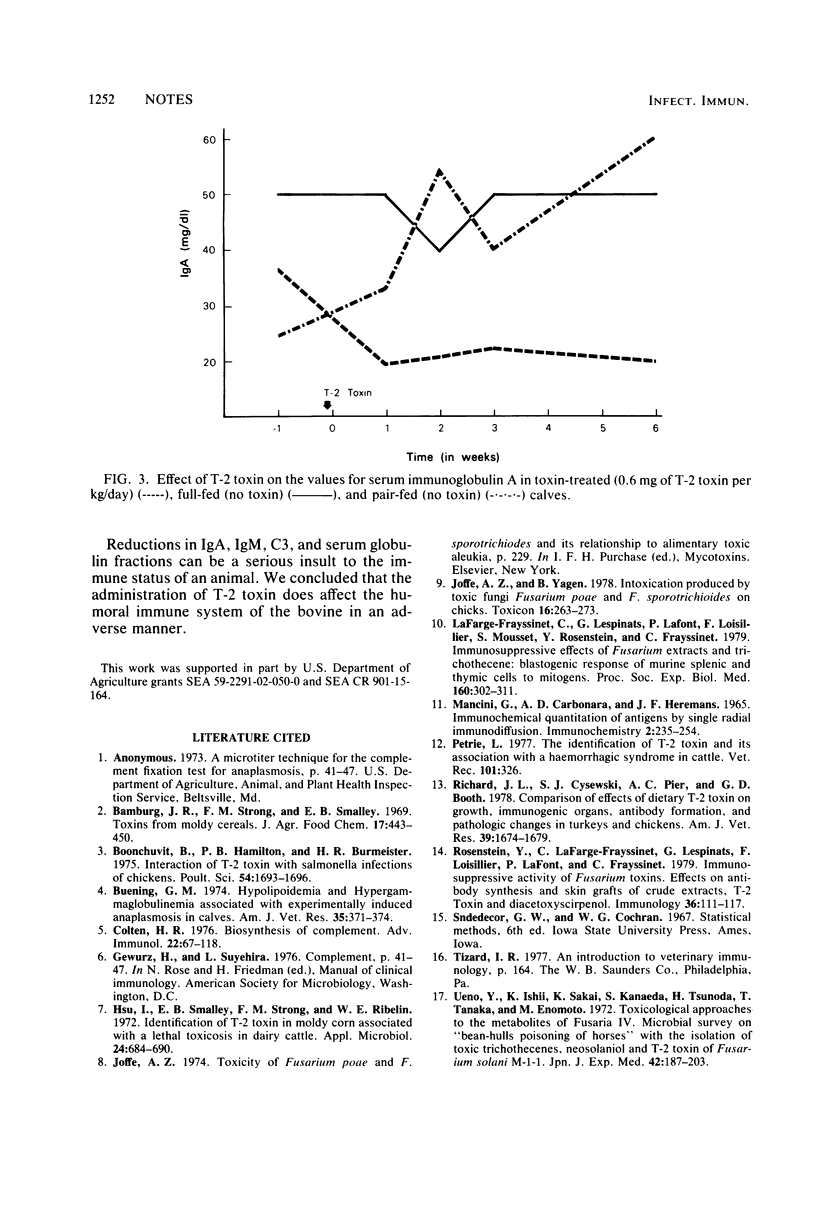Abstract
The effect of a Fusarium metabolite, T-2 toxin, on the bovine humoral immune system was explored during high-level, chronic administration. T-2 toxin administered to calves for 43 days at the rate of 0.6 mg/kg per day was associated with alterations of serum protein fractions, immunoglobulin levels, and C3 levels. Significant reductions in the levels of alpha, beta 1, beta 2, and gamma globulins, but not albumin, occurred after T-2 toxin administration. Likewise, a decline in C3 and serum immunoglobulin levels were evident. The levels of immunoglobulin M and immunoglobulin A, but not immunoglobulin G, in toxin-treated calves were significantly lower than control levels.
Full text
PDF



Selected References
These references are in PubMed. This may not be the complete list of references from this article.
- Boonchuvit B., Hamilton P. B., Burmeister H. R. Interaction of T-2 toxin with Salmonella infections of chickens. Poult Sci. 1975 Sep;54(5):1693–1696. doi: 10.3382/ps.0541693. [DOI] [PubMed] [Google Scholar]
- Buening G. M. Hypolipoidemia and hypergammaglobulinemia associated with experimentally induced anaplasmosis in calves. Am J Vet Res. 1974 Mar;35(3):371–374. [PubMed] [Google Scholar]
- Colten H. R. Biosynthesis of complement. Adv Immunol. 1976;22:67–118. doi: 10.1016/s0065-2776(08)60548-9. [DOI] [PubMed] [Google Scholar]
- Hsu I. C., Smalley E. B., Strong F. M., Ribelin W. E. Identification of T-2 toxin in moldy corn associated with a lethal toxicosis in dairy cattle. Appl Microbiol. 1972 Nov;24(5):684–690. doi: 10.1128/am.24.5.684-690.1972. [DOI] [PMC free article] [PubMed] [Google Scholar]
- Joffe A. Z., Yagen B. Intoxication produced by toxic fungi Fusarium poae and F. sporotrichioides on chicks. Toxicon. 1978;16(3):263–273. doi: 10.1016/0041-0101(78)90087-9. [DOI] [PubMed] [Google Scholar]
- Lafarge-Frayssinet C., Lespinats G., Lafont P., Loisillier F., Mousset S., Rosenstein Y., Frayssinet C. Immunosuppressive effects of Fusarium extracts and trichothecenes: blastogenic response of murine splenic and thymic cells to mitogens. Proc Soc Exp Biol Med. 1979 Mar;160(3):302–311. doi: 10.3181/00379727-160-40439. [DOI] [PubMed] [Google Scholar]
- Mancini G., Carbonara A. O., Heremans J. F. Immunochemical quantitation of antigens by single radial immunodiffusion. Immunochemistry. 1965 Sep;2(3):235–254. doi: 10.1016/0019-2791(65)90004-2. [DOI] [PubMed] [Google Scholar]
- Petrie L., Robb J., Stewart A. F. The identification of T-2 toxin and its association with a haemorrhagic syndrome in cattle. Vet Rec. 1977 Oct 15;101(16):326–326. doi: 10.1136/vr.101.16.326. [DOI] [PubMed] [Google Scholar]
- Richard J. L., Cysewski S. J., Pier A. C., Booth G. D. Comparison of effects of dietary T-2 toxin on growth, immunogenic organs, antibody formation, and pathologic changes in turkeys and chickens. Am J Vet Res. 1978 Oct;39(10):1674–1679. [PubMed] [Google Scholar]
- Rosenstein Y., Lafarge-Frayssinet C., Lespinats G., Loisillier F., Lafont P., Frayssinet C. Immunosuppressive activity of Fusarium toxins. Effects on antibody synthesis and skin grafts of crude extracts, T2-toxin and diacetoxyscirpenol. Immunology. 1979 Jan;36(1):111–117. [PMC free article] [PubMed] [Google Scholar]
- Ueno Y., Ishii K., Sakai K., Kanaeda S., Tsunoda H. Toxicological approaches to the metabolites of Fusaria. IV. Microbial survey on "bean-hulls poisoning of horses" with the isolation of toxic trichothecenes, neosolaniol and T-2 toxin of Fusarium solani M-1-1. Jpn J Exp Med. 1972 Jun;42(3):187–203. [PubMed] [Google Scholar]


